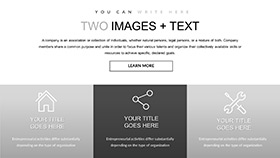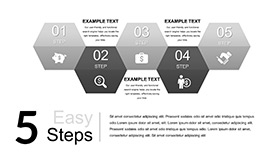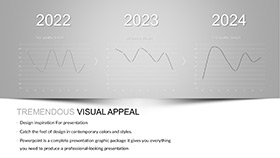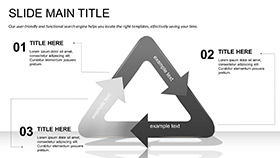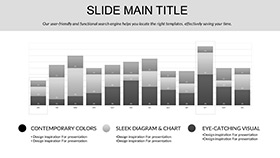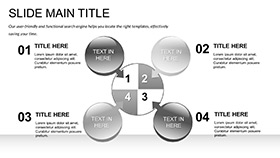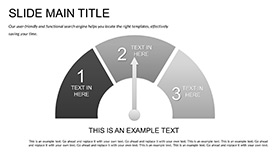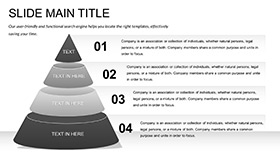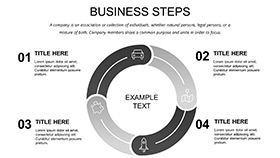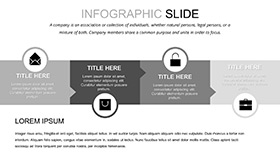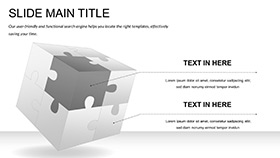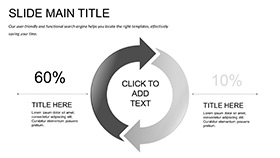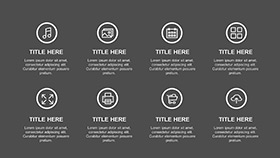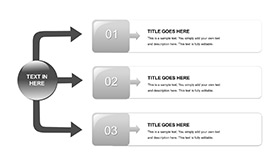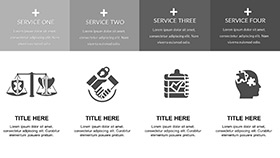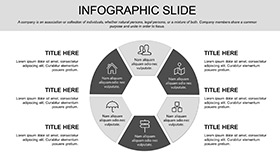In the fast-paced world of scientific discourse, where ideas spark across disciplines, your presentation needs to bridge complexity with elegance. Enter the Versatile Science Keynote Template - a chameleon of slides that adapts to any topic, from molecular biology to astrophysics. With 28 dynamic diagrams, three master layouts, and seven color schemes, it's built for Keynote users who demand flexibility without fuss, working smoothly from version 2016 up.
This template isn't locked to one lab coat; it's for the curious minds - professors unpacking quantum mechanics, grad students defending theses, or environmental analysts charting climate shifts - who want visuals that clarify rather than confuse. Envision a high school teacher animating cell division cycles, or a pharma exec layering drug trial data: the result is audiences leaning in, questions flowing, and concepts sticking long after the lights dim.
Building Blocks for Cross-Disciplinary Impact
At its core, the template offers a toolkit of visual primitives: icons for quick categorization, placeholders for seamless photo inserts, and scalable vectors that hold up under zoom. It's designed for the interdisciplinary edge, where a single deck might weave chemistry equations with ecological models.
Infographics That Tell Stories
Dive into the diagram library, where pie charts evolve into layered ecosystems or line graphs trace particle paths. Edit text overlays to narrate your hypothesis, and let Keynote's morphing handle the rest - fading from setup to simulation in a blink.
- Chart Varieties: Bar, line, and radial options, all data-linked for real-time updates.
- Icon Sets: Themed packs for physics (gears, waves) and biology (DNA, cells), drag-ready.
- Background Layers: Three options, from minimalist grids to subtle gradients, to frame without distracting.
Such elements make it a go-to for hybrid talks, like those blending tech with sustainability.
Custom Graphs for Precise Data
For the data-heavy slides, pre-built axes await your inputs - paste CSV snippets to auto-populate, then tweak legends for clarity. A subtle tip from design pros: use contrasting hues from the color schemes to spotlight anomalies, as in a geologist's fault line mapping.
- Gather your metrics, like biodiversity indices over seasons.
- Align them in the graph slide, scaling y-axes to fit outliers.
- Animate paths to reveal progressions, drawing eyes to pivotal shifts.
This precision turns spreadsheets into showstoppers.
Adapting to Educational and Research Scenarios
The template's versatility shines in classrooms, where a lecturer might sequence slides to mirror lesson arcs - from intro hooks to recap quizzes. In research circles, it's the backbone for poster sessions turned digital, with modular sections letting you excerpt for time-crunched symposia.
Think of a conservation biologist presenting habitat fragmentation: timelines connect deforestation dots to species impacts, fostering discussions on policy. Or in corporate training, where R&D leads use it to demystify AI algorithms for non-tech teams, icons bridging the jargon gap.
Conference-Ready Workflows
Prep for panels by templating Q&A buffers at the end - blank canvases with prompt icons for impromptu sketches. Export variants for virtual formats, ensuring hyperlinks to sources pop on shared screens.
Workflow hack: Version control via Keynote's duplicates keeps iterations tidy, ideal for peer feedback loops.
Student Project Powerhouse
For undergrads, it levels the playing field - swap stock photos for fieldwork snaps, and voila, a pro-grade defense deck. Encourages experimentation, like testing animation speeds for rhythm.
Insider Strategies for Seamless Delivery
Maximize flow by scripting slide handoffs: end each with a teaser question, pulling viewers forward. For inclusivity, layer descriptive notes under visuals, voicing graphs for audio aids.
Integrate with tools like Numbers for live data pulls, keeping decks evergreen. This template empowers your expertise to lead - grab the Versatile Science Keynote Template for $22 and ignite those intellectual fires.
Frequently Asked Questions
How flexible are the diagrams for different sciences?
Highly adaptable, with universal shapes that suit biology flows or physics equations equally well.
What file formats come with the download?
Keynote-native .key files, plus .kth themes and .jpg previews for quick reviews.
Can beginners handle the customizations?
Yes, intuitive drag-and-drop and preset schemes make it approachable for all levels.
Are there built-in transitions?
Keynote-standard ones are embedded, customizable to match your pacing.
Does it include photo placeholders?
Indeed, framed spots for images, auto-cropping to fit layouts.
How do color schemes work?
Select from seven, each with harmonious tones for diagrams and text.









